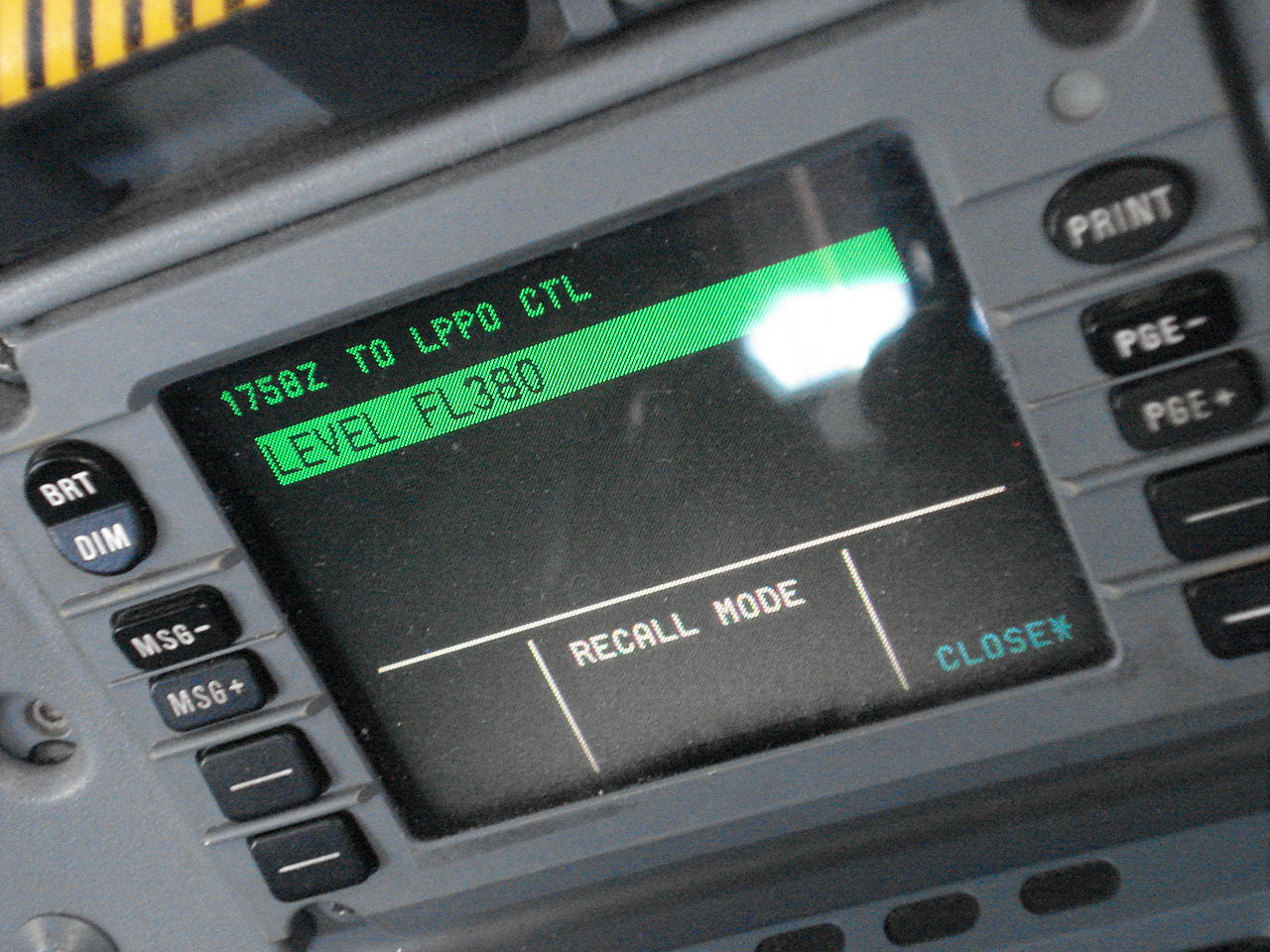The congested Air Traffic Control (ATC) system at Mumbai airport is under-going a major leap forward with trials of the SITA Departure Clearance System (DCL) through Data Link Communication (DLC).
 |
| The Datalink Control and Display Unit (DCDU) the pilot interface for CPDLC messages. Image courtesy Wikipedia. |
The Airports Authority of India (AAI) which manages civilian ATC operations across most of India, has begun has begun trial operations of Data Link Communication for pre-departure clearance. This new system is expected to significantly reduce workload of ATC controllers by automating the transmission of routine information like clearance delivery, Automatic Terminal Information Service (ATIS), meteorological (weather etc.) information (VOLMET) etc. The system is supplied by SITA and its components at Mumbai are :
- PDC (Pre Departure Clearance delivery) through data link using ACARS (Aircraft Communications Addressing and Reporting System) capability.
- Centralised d-ATIS
- d-VOLMET
however, initially only the automated PDC system will be operated.
Read this SITA PDF document for more information on this technology.
Pre-departure clearance is an authorisation issued by ATC to a pilot regarding the runway to be used, route to be flown right from take-off to destination, including use of SIDs (Standard Instrument Departure), and cruising level that the aircraft is expected to maintain. The PDC system can be extended to include taxi information i.e. the route the aircraft is expected to take from its parking bay to the runway.
At present, pilots obtain their PDCs from the ATC through voice radio communication. The pilots then read back the entire clearance to confirm correct receipt of the PDC. (See and hear this clearance delivery at Long Beach airport in Los Angeles). This is a time consuming exercise leading to increased communication workload, along with having the potential of misunderstanding.
In the new system the pilot requests pre-departure clearance using the Flight Management Computer (FMC) in the cockpit. The request is transmitted via data-link to the air traffic controller (ATCO), who then selects the appropriate clearance sends the PDC back to the aircraft at the press of a button, again via an ACARS data link. At the aircraft, the PDC can be printed out.
Getting the information both on screen and print saves on both the radio chatter and time for both the controller and the pilot, and eliminates human errors enhancing safety and operational efficiency. For the passenger this translates to quick departures as pilots do not have to wait in a queue for obtaining clearance.
 |
| Image courtesy Wikipedia. |
In case you are wondering on the importance of clear communications between the pilot and controller, the worst accident in the history of aviation occurred on the ground, due to mis-understanding and mis-communication. 583 people died when a KLM 747 collided in to a Pan Am 747 at Los Rodeos Airport, Tenerife.
See a 84 minute video on this incident at the end of this article.
Kingfisher and IndiGo to benefit most
This system is dependent on the aircraft having the data link capability. Bangalore Aviation contacted the major domestic airlines to determine their fleet capability.
Air India confirmed that their wide body fleet i.e. Boeing 747-400 and Boeing 777-200LR and 777-300ER fleet is fully equipped up to a higher level of data link called CPDLC (Controller Pilot Data Link Communication) which is part of FANS. However their narrow body fleet Boeing 737-800 of Air India Express, and Airbus A319/A320/A321 of the erstwhile Indian Airlines is not equipped with any data link capability.
Kingfisher confirmed their Airbus A320/A319/A321 fleet is equipped to receive PDCs via ACARS. Their ATR-72 “are also capable of receiving PDC messages, when ACARS is activated.”
Jet Airways, SpiceJet and IndiGo did not respond to our requests.
IndiGo advertises its use of ACARS, so it is safe to assume their aircraft will have the ability to benefit from this system. Airline sources indicated that SpiceJet aircraft are not equipped with data link, and technical airport sources indicated that narrow body aircraft at Jet Airways and Jet Airways Konnect may not have data link capability. It is not clear if Jet’s wide-body aircraft are data link capable.
In addition to Mumbai, such Data Link Departure Clearance (DLC) systems are also being deployed at Delhi, Kolkata, Chennai, Bangalore and Hyderabad airports.
Sources at Bangalore Airport informed that the DLC system is already built-in to their Selex air traffic control equipment from the time of its delivery almost five years ago. It is awaiting activation pending some software updates from the manufacturer and a green light from the AAI operated ATC.
 Bangalore Aviation News, Reviews, Analysis and opinions of Indian Aviation
Bangalore Aviation News, Reviews, Analysis and opinions of Indian Aviation

